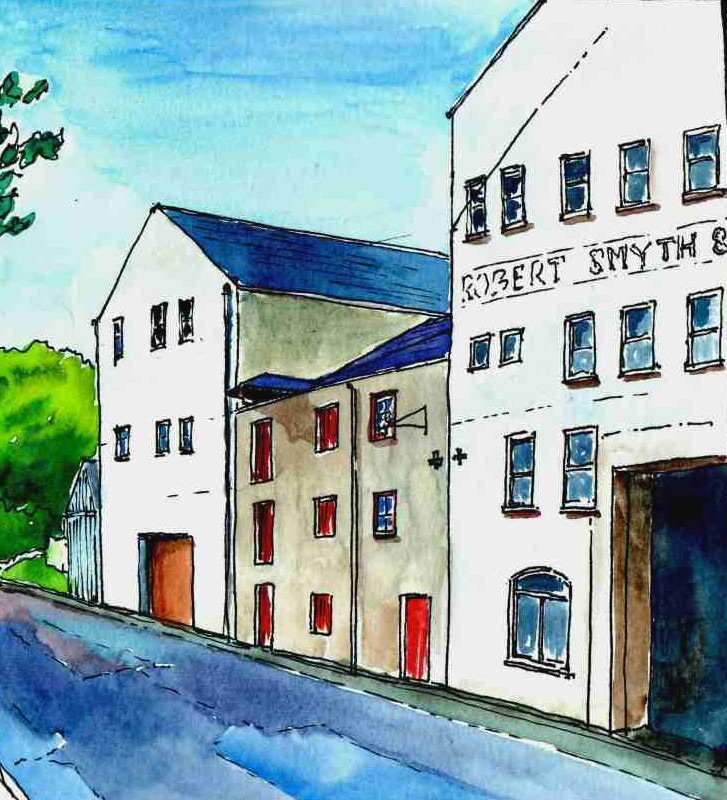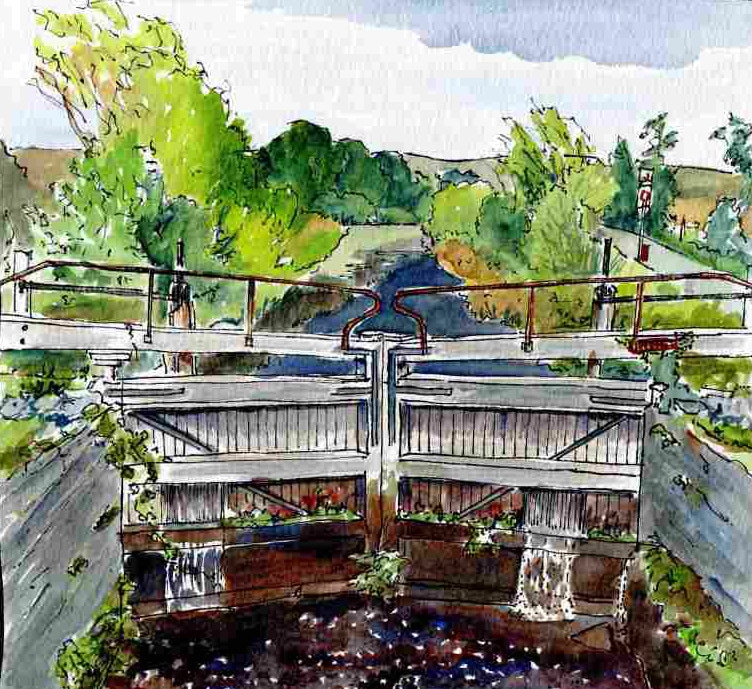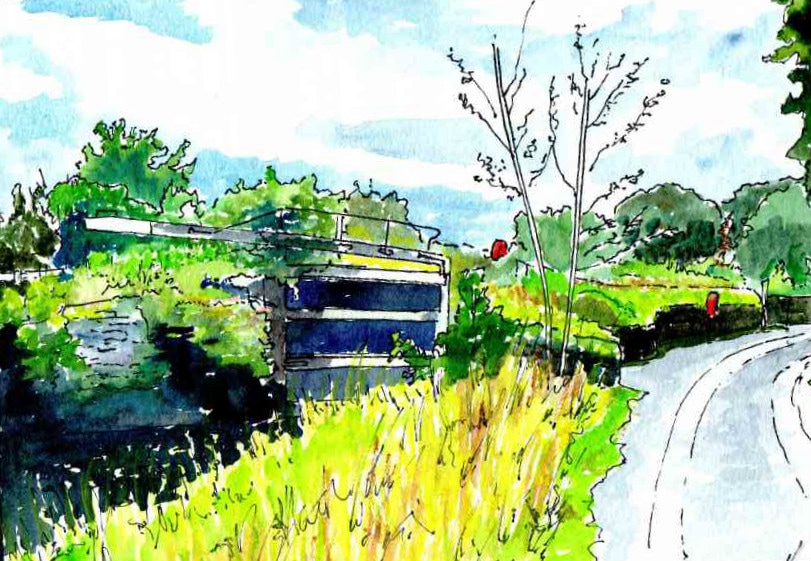The Strabane Canal
|
|
|
To further encourage the development of the area, the newly enobled Marquis of Abercorn had an act of Parliament passed to enable the creation of a canal to improve navigation between Strabane and the Foyle in 1790. Construction was complete by 1796. This had the desired effect and the canal was highly profitable until the railways arrived in 1847. The canal ran for 4 miles and had two locks.Crampsie lock is located at the exit to the Foyle. Devine's Lock is located about a mile upstream.
The canal ended in a ‘basin’ located behind the main streets of the town. This was quickly surrounded by warehousing and became a focus of economic activity. A plan was developed by architect Robert Woodgate for the area in 1802 and called the ‘New Town’. This image is based upon a photograph taken in the 1890’s. The basin was filled in in the early 1970’s but features are likely to remain below the present surface. The warehousing to the right of the image still remains and is located behind the Alley Theatre. Surviving warehouses, Canal Basin.
|
|
Crampsie Lock, Stabane Canal.
Devine's Lock, Strabane Canal.
Canal Basin 1890's
|





